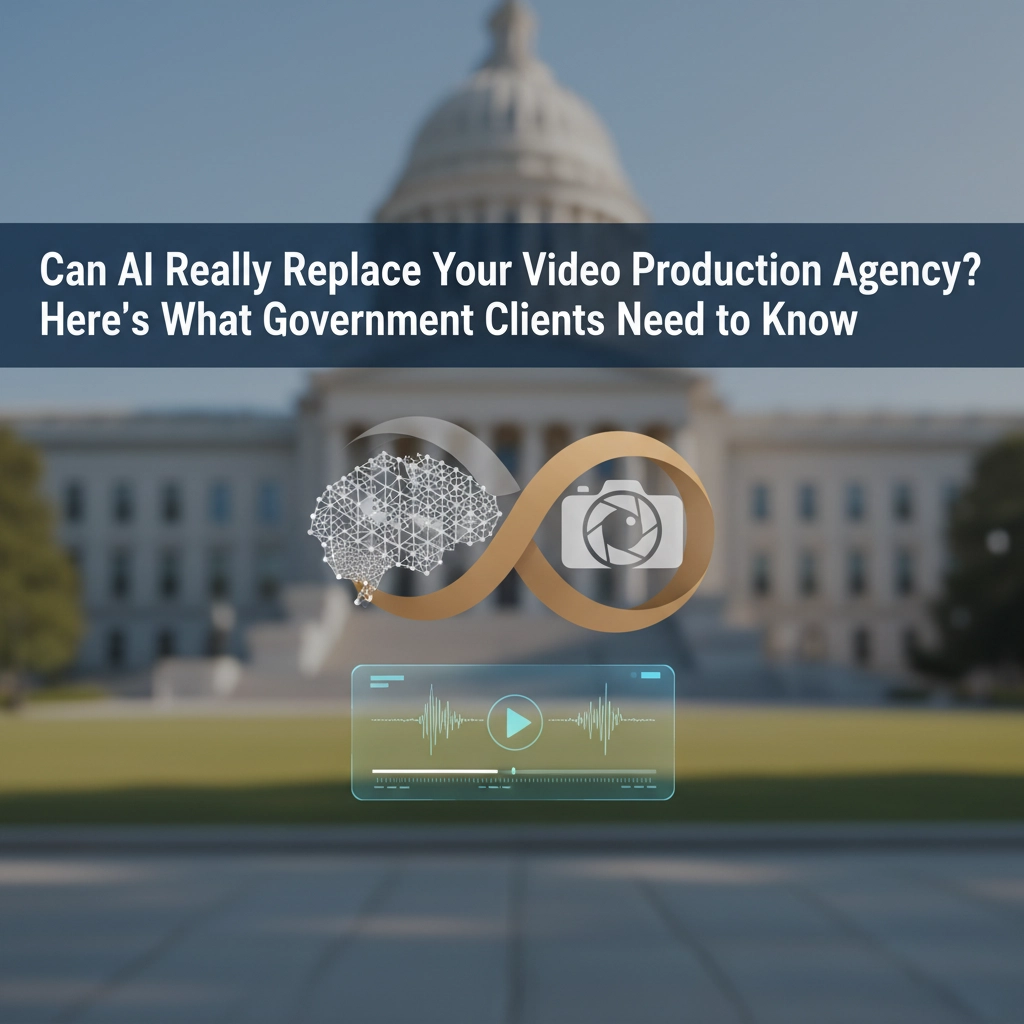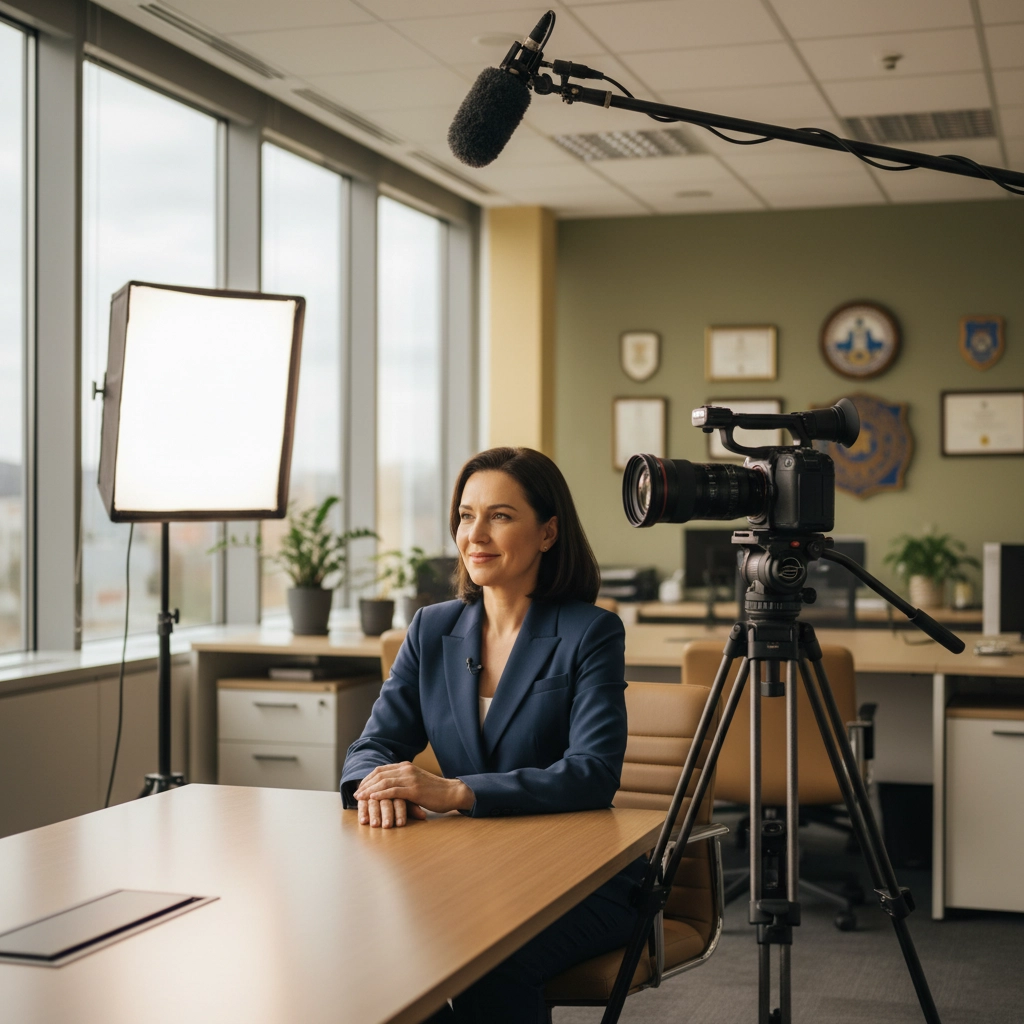Can AI Really Replace Your Video Production Agency? Here's What Government Clients Need to Know

Let's cut straight to the chase: No, AI cannot replace your video production agency. But before you close this tab thinking "another agency trying to save their own skin," hear us out. This isn't about protecting turf: it's about understanding what you're actually getting when you work with AI tools versus experienced professionals, especially when you're dealing with the unique challenges of government communications.
As someone making procurement decisions for your municipality or government agency, you've probably seen the headlines about AI revolutionizing everything. Maybe your team has even asked, "Why are we hiring an agency when we could just use AI to make our videos?" It's a fair question, and one that deserves a thorough answer.
What AI Actually Does Well (And It's Pretty Impressive)
Let's give credit where it's due. AI has genuinely transformed certain aspects of video production, and any agency worth their salt is already using these tools to deliver better value to their clients.
The Technical Heavy Lifting
AI excels at the tedious, time-consuming tasks that used to eat up hours of human labor. Think automated color correction, noise reduction, and basic editing cuts. For government clients, this is actually fantastic news: it means your production partner can focus their human expertise on strategy and storytelling rather than spending hours tweaking audio levels.

Content Multiplication
Here's where AI really shines for government work: taking one piece of content and adapting it for multiple uses. Create a 10-minute training video, and AI can help generate shorter social media versions, extract key quotes for internal communications, and even create different versions for different departments: all while maintaining consistent messaging.
Accessibility Features
AI-powered transcription and captioning tools are game-changers for government accessibility requirements. What used to take days now happens in hours, and the accuracy has improved dramatically. This isn't just nice-to-have: it's often legally required for public sector content.
Where AI Hits a Wall (And Why That Matters for Government Work)
But here's where things get interesting: and where the limitations become deal-breakers for serious government communications.
AI Doesn't Understand Your Mission
Try asking AI to create a video about your city's new sustainability initiative. It'll give you generic talking points about "going green" and stock footage of wind turbines. But it won't capture why this initiative matters to your specific community, how it connects to your city's broader vision, or how to address the concerns your residents actually have.
A human creative team spends time understanding your municipality's unique culture, challenges, and stakeholder landscape. They know that the sustainability message needs to land differently in a rural farming community versus an urban tech hub.
The Interview Problem
Government communications often require authentic human connection: town halls, employee testimonials, community impact stories. AI can't sit down with your mayor and draw out the personal story that makes policy relatable. It can't read the room during a sensitive community meeting or adjust questions on the fly when an interview takes an unexpected turn.

Strategic Storytelling
This is the big one. AI can write a script, but it can't craft a narrative strategy that builds trust, addresses skepticism, and moves people to action. When you're dealing with complex issues like budget allocations, policy changes, or community development, the way you tell the story matters just as much as the facts you present.
Government Clients Face Unique Challenges
Let's talk about what makes government video production different from corporate marketing: because these differences highlight exactly why human expertise remains essential.
Multi-Stakeholder Complexity
You're not just creating a video; you're managing input from elected officials, department heads, legal teams, and community representatives. Each group has different priorities, concerns, and communication styles. An experienced production team knows how to navigate these dynamics, facilitate productive feedback sessions, and synthesize multiple perspectives into coherent messaging.
AI can't mediate between conflicting stakeholder opinions or suggest diplomatic ways to address sensitive topics.
Regulatory and Compliance Considerations
Government communications must meet accessibility standards, follow procurement guidelines, and often require legal review. Professional agencies understand these requirements and build them into their workflows. They know which approvals are needed at each stage and how to document the process for audit purposes.
Crisis Communication
When you need to communicate about an emergency, policy crisis, or community controversy, response time and message accuracy are critical. While AI can help with rapid content creation, you need human judgment to navigate sensitive situations, anticipate public reaction, and adjust messaging in real-time.
The Hybrid Approach: Getting the Best of Both Worlds
Here's what smart government communications teams are doing: partnering with agencies that leverage AI for efficiency while maintaining human oversight for strategy and execution.

Faster Turnaround, Better Value
When your agency uses AI for technical tasks, you get faster delivery and more budget allocated to creative strategy. That training series for your public works department? The AI handles formatting and basic editing while the human team ensures each module speaks to your employees' actual concerns and work environment.
Scalable Content Systems
AI enables agencies to create modular content systems that grow with your needs. Start with a master video about your new citizen services portal, and the AI can help generate versions for different user groups: seniors, new residents, business owners: while maintaining consistent core messaging.
Quality Assurance
Professional agencies use AI as a productivity tool, not a replacement for expertise. They still review every AI-generated element, fact-check information, ensure brand consistency, and most importantly, verify that the content serves your strategic communication goals.
What This Means for Your Procurement Process
When evaluating video production partners, don't ask "Do you use AI?" Ask "How do you use AI to deliver better value while maintaining strategic oversight?"
The agencies worth considering will explain how they leverage AI for efficiency while ensuring human experts handle the strategic thinking, stakeholder management, and creative direction that government communications demand.
They'll also be transparent about timelines and deliverables. AI can speed up certain processes, but it doesn't eliminate the time needed for stakeholder input, approval cycles, or the iterative refinement that produces truly effective government communications.
The Bottom Line
AI is a powerful tool that makes video production more efficient and accessible. But government communications require more than efficiency: they require understanding of complex stakeholder dynamics, strategic thinking about public impact, and the human insight to transform policy into relatable, actionable messaging.
The future isn't AI versus human creativity; it's AI plus human expertise. When you partner with an agency that understands this balance, you get the best of both worlds: the efficiency gains of modern technology with the strategic oversight and creative insight that only experienced professionals can provide.
Your residents, employees, and stakeholders deserve communications that don't just inform: they inspire, reassure, and build trust in your institution's mission. That's something no algorithm can achieve on its own.
Ready to explore how the right production partner can help you communicate more effectively with your community? Let's talk about your specific needs and how we can support your communication goals.
